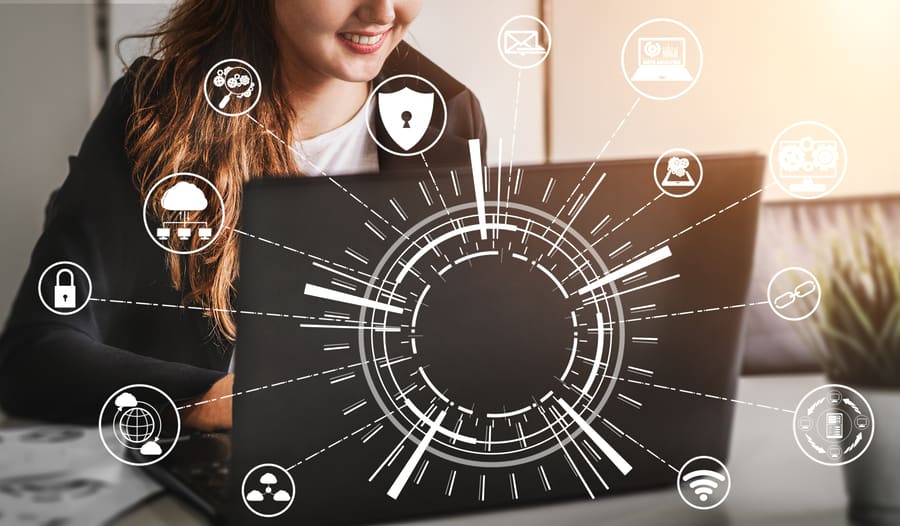It seems as soon as managed it security experts come up with a bold new solution to protect consumer data, hackers come up with an equally bold response. And the stakes for small and mid-size companies are high. Luckily, the white hats aren’t giving up. These 5 emerging technologies may just be the next lines of defense in the cybersecurity wars.
1. Hardware Authentication
We know that usernames and passwords just aren’t failsafes anymore. Wouldn’t it be nice to have a more secure form of authentication?
Intel has an idea that’s gaining traction in tech circles: making authentication a feature of a user’s hardware. With their sixth-generation Core vPro processor, they’re adding hardware-enhanced features that can validate a user’s identity. This builds on their efforts to make the actual device an element of security – one that’s part of a three-part authentication process.
2. User Behavior Analytics (UBA)
Like it or not, we’re rather predictable creatures. So, instead of relying on authenticating via only a username and password, why not add a layer of technology that gets to know our online behavior. While this may seem a bit creepy, it’s an idea that’s catching on as well.
User behavior analytics (UBA) is technology that identifies any behavior by the user that’s out of the ordinary. Any anomalous behavior triggers a red flag to system defenders that all is not well. As UBA is further developed, it won’t only compare a user’s past to present behavior. It can also perform what’s called “peer analysis,” which compares users who have the same manager or work in the same department. This emerging technology can potentially close a blind spot in that keeps cybersecurity experts from identifying an attack. It can also alert a manager that a particular employee needs some extra security training.
3. Data Loss Prevention Safeguards
In the case of a breach, companies can put certain safeguards in place to minimize the damage. For example,
- Preventing cyber-attackers from monetizing data.
- Securing data in a protected or encrypted form as it’s used across an extended business enterprise.
- Protecting data down to a field and subfield level.
These safeguards provide an extra layer of security in case a hacker accesses a vulnerable system.
4. Deep Learning
You may have heard the terms artificial intelligence and machine learning before. These are both examples of what many in the IT field call deep learning technologies, and IT professionals are excited about their potential for cybersecurity purposes.
Like UBA, deep learning tracks anomalous behavior – this time on the part of entities rather than individual users. For example, business analytics may focus on data center trends and anomalies. Machine learning (ML) has the potential to identify and respond to threats as they occur. Clearly, this capability will dramatically improve cybersecurity in business. Another tool you may hear about in the coming year or so is Robotic Process Automation (RPA), which is a virtual system that can handle repetitive computing or business protocols. There are several uses for RPA in the area of cybersecurity, including incident detection and response.
5. The Cloud
As more businesses move from on-premise systems to cloud-based software, security solutions are being developed to keep sensitive data safe. Intermediate solutions include virtualized firewalls, instrusion detection, and prevention systems. The good news is that cloud technology is becoming more sophisticated all the time.
Contact Newtec Services for Reliable, Responsive Security Tools
Did you know that we bundle IT services to meet each business’ unique needs? We also stay up-to-date on managed it security services that will help you keep your sensitive data safe from cyberattacks. If you would like to learn more about our customizable cybersecurity plans, let us know. We’re happy to give you more information.







